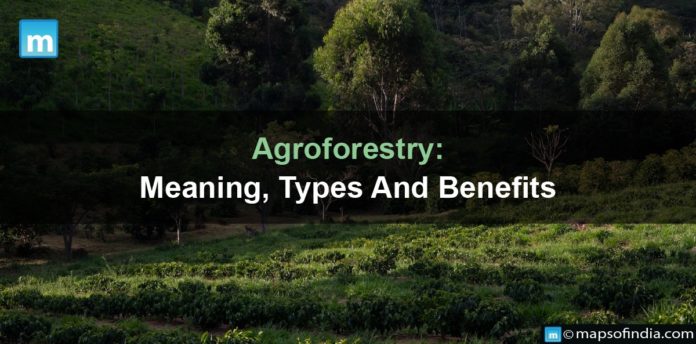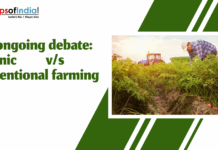Agroforestry is a land-use management system that combines crops or livestock with mutually beneficial tree and shrub cultivation. This environmentally and economically sustainable approach has gained traction recently as a viable solution to various environmental and agricultural challenges.
Types of Agroforestry Systems
-
Alley Cropping
This method entails planting rows of trees or shrubs among crops, forming “alleys” where the crops are grown. The trees provide shade, improve soil structure, and increase biodiversity, while crops benefit from nutrient cycling and reduce wind and water erosion.
-
Silvopasture
Silvopasture is the combination of trees and livestock grazing. Trees provide shade, timber, and animal forage, resulting in healthier livestock and increased meat or milk production.
-
Forest Farming
Crops are grown in the understory of a managed forest in forest farming. This system can include growing mushrooms, medicinal herbs, or specialty woods while preserving the forest ecosystem.
-
Windbreaks and shelterbelts
Planting rows of trees or shrubs around fields can act as windbreaks, shielding crops from strong winds, reducing soil erosion, and improving microclimate conditions.
-
Home gardens or Agroforestry Gardens
This system integrates trees and shrubs into domestic gardens to provide fruits, nuts, and wood for household use while improving the garden’s overall aesthetics and biodiversity.
Benefits of Agroforestry
-
Biodiversity Conservation
Agroforestry promotes biodiversity conservation by creating diverse ecosystems that support a variety of plants, animals, and microorganisms.
-
Soil Health and Fertility
Trees in agroforestry systems improve soil structure and fertility by enhancing nutrient cycling, reducing erosion, and providing organic matter through leaf litter. This leads to increased crop productivity and resilience to environmental stress.
-
Water Quality and Quantity
Agroforestry helps maintain and improve water quality by reducing runoff and filtering pollutants. Trees and shrubs’ roots help prevent soil erosion and stabilize streambanks, resulting in healthier aquatic ecosystems.
-
Mitigation of Climate Change
Agroforestry trees act as carbon sinks, absorbing and storing carbon dioxide from the atmosphere. Furthermore, trees’ shade can help mitigate extreme temperatures and reduce the need for irrigation, thereby conserving water resources.
-
Enhanced Resilience
Agroforestry systems are often more resilient to climate fluctuations and extreme weather events. The diversity of crops and vegetation layers can help buffer against crop failures and income losses.
-
Agroforestry and Sustainable Agriculture
A fundamental aspect of agroforestry is sustainable agriculture. Agroforestry contributes to sustainable food production while minimizing negative environmental impacts by combining trees with agricultural practices. It adheres to sustainability principles by optimizing resource use, increasing ecological resilience, and promoting community well-being.
Agroforestry also offers an opportunity to address some of the most pressing issues confronting modern agriculture. For example, it can help reduce the need for synthetic fertilizers and pesticides, combat soil degradation, and mitigate climate change. Its ability to conserve biodiversity and provide habitat for pollinators is especially critical in light of declining bee populations, which are essential for crop pollination.
Conclusion
Agroforestry is a holistic and sustainable land-use management system that embodies the principles of conservation, productivity, and community well-being. By integrating trees and shrubs into agricultural practices, agroforestry offers many benefits, from biodiversity conservation and climate change mitigation to enhanced soil fertility and economic diversification.




